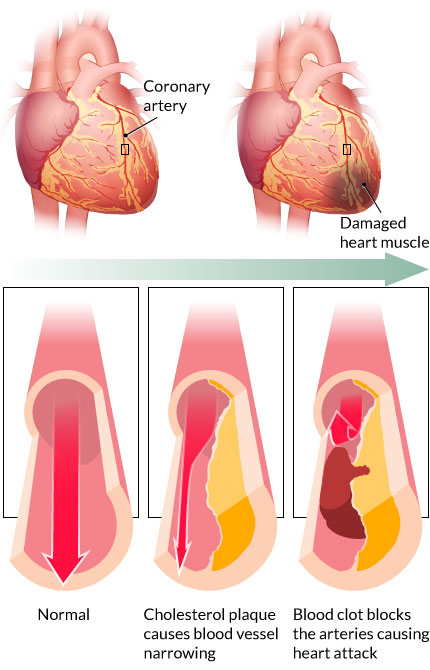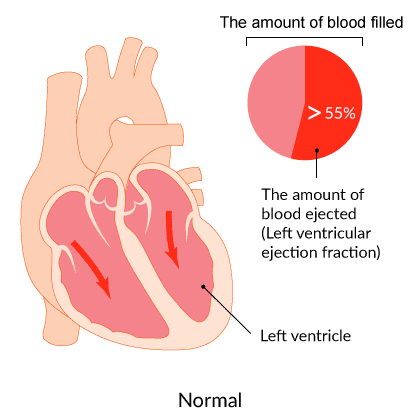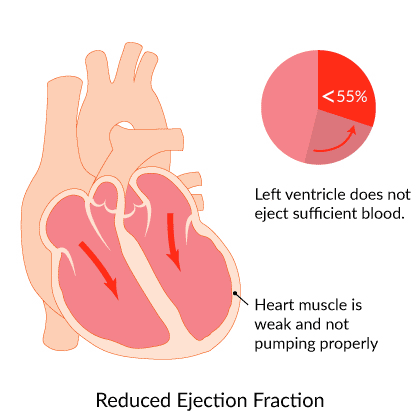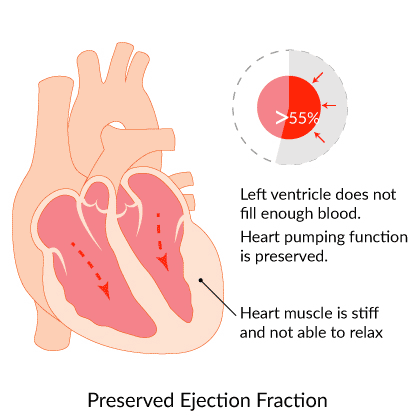There are many different causes of heart failure. The most common cause of heart failure in Canada is due to coronary artery disease. This is the accumulation of cholesterol plaque within the wall of arteries. If cholesterol plaque occurs over a long period, it can lead to chronic narrowings in the arteries, starving the heart muscle of blood and oxygen. If the weakened heart muscle is because of coronary artery disease, this is called ischemic cardiomyopathy (ischemic meaning lack of blood flow and cardiomyopathy meaning heart muscle problem).
More acutely, a heart attack can happen. This is when a cholesterol plaque in the wall of an artery ruptures open, and causes a blood clot to form, immediately blocking the arteries, and again, starving the heart muscle of blood and oxygen. It is difficult to tell which cholesterol plaques are at risk of rupturing and causing a heart attack.

When a large area of heart muscle is affected by a coronary artery disease or a heart attack, the heart may become weak, and heart failure occurs.
It is important to know if coronary artery disease has caused a weakened heart muscle, because if the blocked arteries are opened (either with stents or bypass surgery), the heart function may improve.
There are many other causes of heart failure. These include:
- long standing high blood pressure
- diabetes
- heart valve problems (leaky or tight valves)
- abnormal heart rhythms (called arrhythmias)
- toxins (like excessive alcohol or certain chemotherapies)
- viral infections that affect the heart
- congenital heart conditions
- genetic (inherited) conditions
How is Heart Failure Classified?
There are many different ways to classify heart failure. One of the most useful is based on the left ventricular ejection fraction.
The left ventricle is the main pumping chamber of the heart, and is responsible for circulating oxygenated blood around the body.
The left ventricular ejection fraction refers to the amount of blood that is “ejected” or pumped out with each heart beat. The normal ejection fraction is not 100%, because the heart does not completely empty with blood with every heart beat. Instead the normal ejection fraction is about 55% or more.

Patients with heart failure can be classified into those who have heart failure with low, or reduced ejection fraction, or those who have heart failure with normal, or preserved ejection fraction.
In people with heart failure and reduced ejection fraction, the problem is with the pumping function of the left ventricle. The left ventricle is weak, and doesn’t eject a sufficient amount of blood.

In contrast, the pumping function of the heart is normal in people with heart failure and preserved ejection fraction. The problem here is with the heart’s ability to relax. The heart does not relax well enough to allow blood to fill.
Both of these varieties of heart failure result in the same symptoms – fatigue, shortness of breath and swelling. In ordered to determine whether the ejection fraction is preserved or reduced, and echocardiogram (or some other form of test) is required.

It is important to determine if the ejection fraction is preserved or reduced because the treatment is somewhat different. Most of the therapies (medications, devices) that have been shown to make people live longer with heart failure apply mainly to people with heart failure and reduced ejection fraction. The management of heart failure with preserved ejection fraction focuses mainly on controlling an individual’s risk factors (high blood pressure and diabetes) and making sure they don’t retain extra fluid. Hopefully new therapies will be discovered that improve the long-term prognosis of patients with heart failure and preserved ejection fraction.
Take Home Messages
- There are many different causes of heart failure.
- The most common cause of heart failure in North America is ischemic cardiomyopathy, where the heart muscle is weak because of narrowings or blockages in the arteries around the heart, or a previous heart attack.
- A “heart attack” is not the same thing as heart failure.
- Other causes of heart failure include abnormalities with the heart valves, toxins like alcohol or chemotherapy, a viral infection of the heart muscle, or genetic conditions.
- Heart failure can occur when there is a problem with the pumping function of the heart, called Heart Failure with reduced ejection fraction. When the problem is due to a problem with the heart’s ability to relax, it is called Heart Failure with preserved ejection fraction.